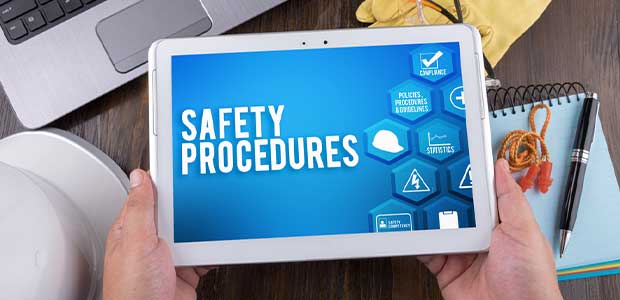
Occupational Safety and Health Training for Nonprofits
- By Jane Marsh
- Jul 23, 2021
There is a lot that goes into protecting your employees. All jobs have hazards, no matter the industry. Workplace safety in any business should be a primary focus because the safety and well-being of your employees are essential.
When it comes to nonprofit organizations, sometimes that is overlooked. The owners and administrators of nonprofit organizations must be aware of this and have systems in place to help prevent workplace injuries. One way nonprofit organizations can better prepare for instances like workplace injuries is occupational safety and health training.
Keep reading to learn the benefits that this training can have for nonprofit organizations.
What Is Occupational Safety & Health Training?
To make any workplace safer, the organization must provide and require safety training. Workplace safety training aims to provide employees with the knowledge, awareness and skills necessary to perform their daily duties safely. It is a process, and safety training varies from industry to industry, and business to business, but they all have one common goal: safety.
Occupational safety and health training includes instructions, guidelines and safety plans to prepare the workforce by identifying potential hazards, outlining reporting requirements and what to do if a workplace hazard occurs on the job. When an incident happens, your employees will be equipped and quickly respond to the danger because the safety training has prepared them.
Benefits of Occupational Safety and Health Training for Nonprofits
Having safety training in place emphasizes the importance of safety within the workplace, establishing a safe culture within the workplace and understanding overall workplace safety. There are many advantages to investing more time and thought into an effective workplace safety training program for your organization. Here are a few of those benefits:
● Increased alertness: Inattention causes accidents. Employees must have active attention and awareness of their surroundings at work. Requiring safety training can help. However, safety training should not be a one-and-done type of program. It is common for employee alertness to decrease over time. Having safety training updated and required as a regular refresher helps minimize employee inattentiveness.
● Prevent workplace injuries: One of the main goals of any safety training program is to prevent workplace injuries and illnesses. Training puts your employees in the best position to avoid hazards and reduce the number of accidents. This is why it is in the best interest of your nonprofit organization to require a safety training program.
● Well-being of employees: Proper workplace safety training helps your employees understand the various hazards related to their job while giving them the tools they need to prevent those hazards. This increases the feeling of security for your employees, which leads to an overall improvement in employee morale in the organization. There also becomes a boost in productivity and employee happiness.
● Lower costs: Occupational safety and health training will save your organization time and money. Businesses spend extreme amounts of money on medical bills, finding replacement workers, repairing damaged equipment and more. It is already hard enough for nonprofits to receive funding to function, so do not add costs due to poor safety.
● Compliance: Of course, there are legal concerns associated with adhering to required safety regulations. There are laws in place that surround workplace safety, but health and safety training for your employees will ensure your organization is compliant with the rules and regulations and stays that way.
Safety Training is for Everybody
Although on-the-job incidents happen, it is important to try to prevent them. If you want to establish a safe workplace environment, your nonprofit organization needs occupational safety and health training.
Having an effective safety training program in place helps your organization become morally and socially responsible while ensuring your employees have the knowledge and skills they need to prepare for any hazard.